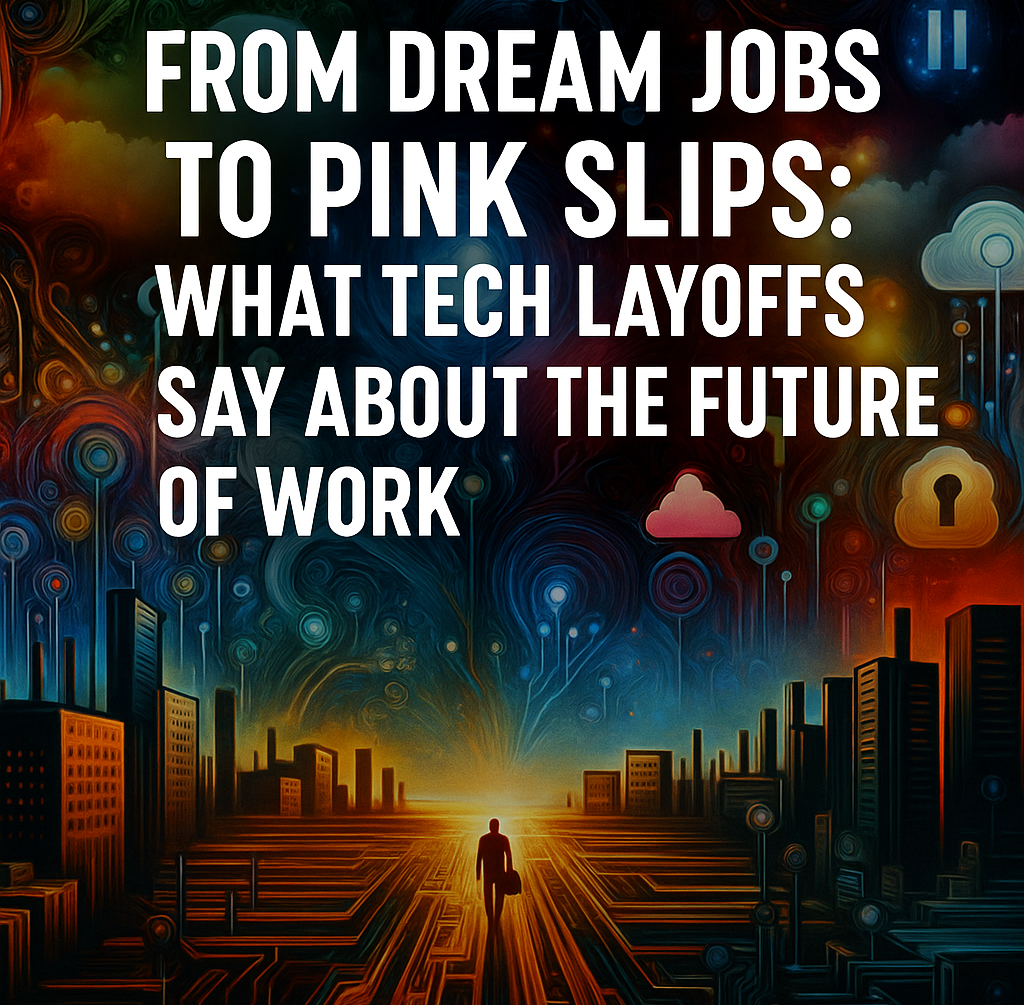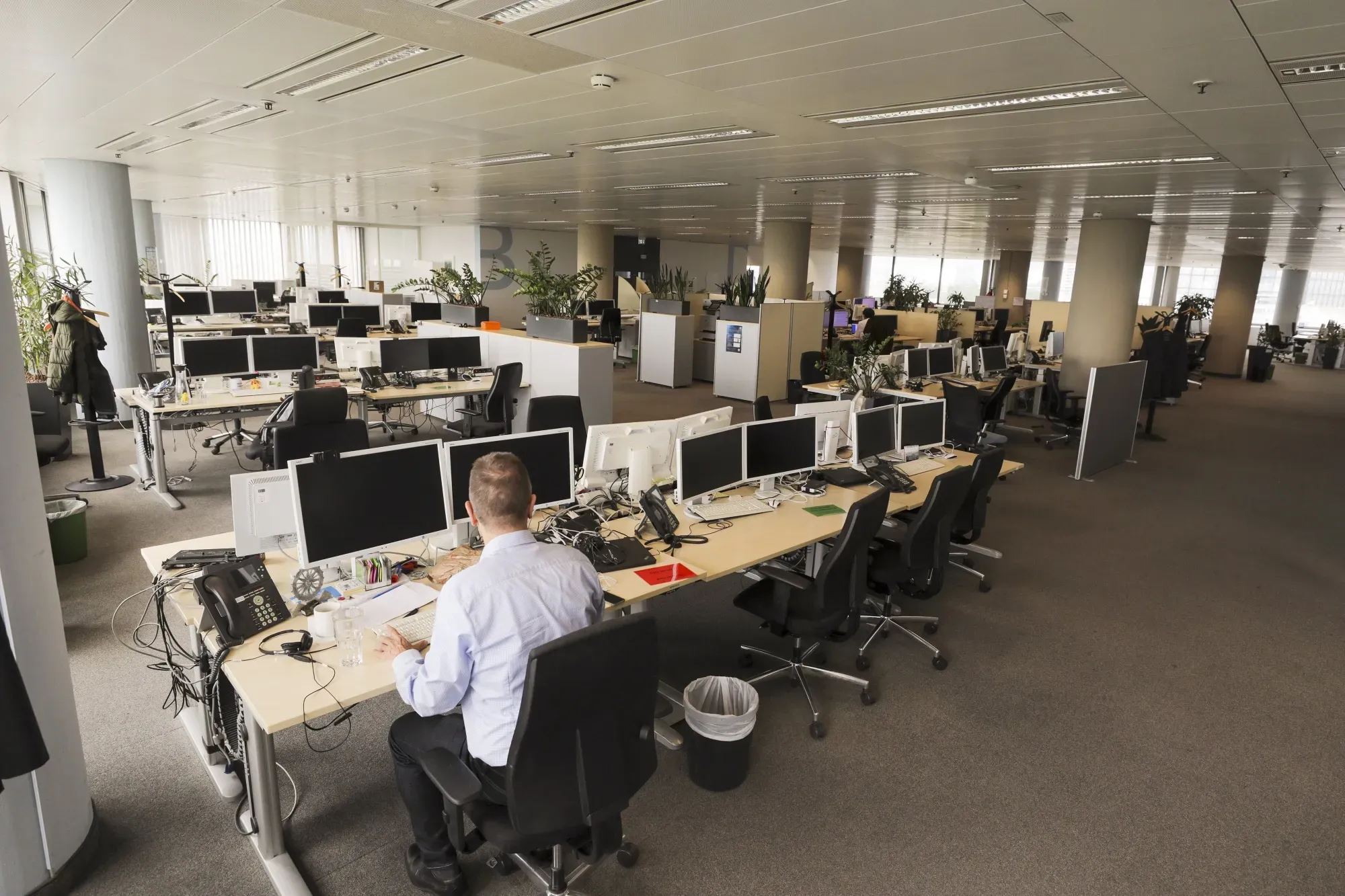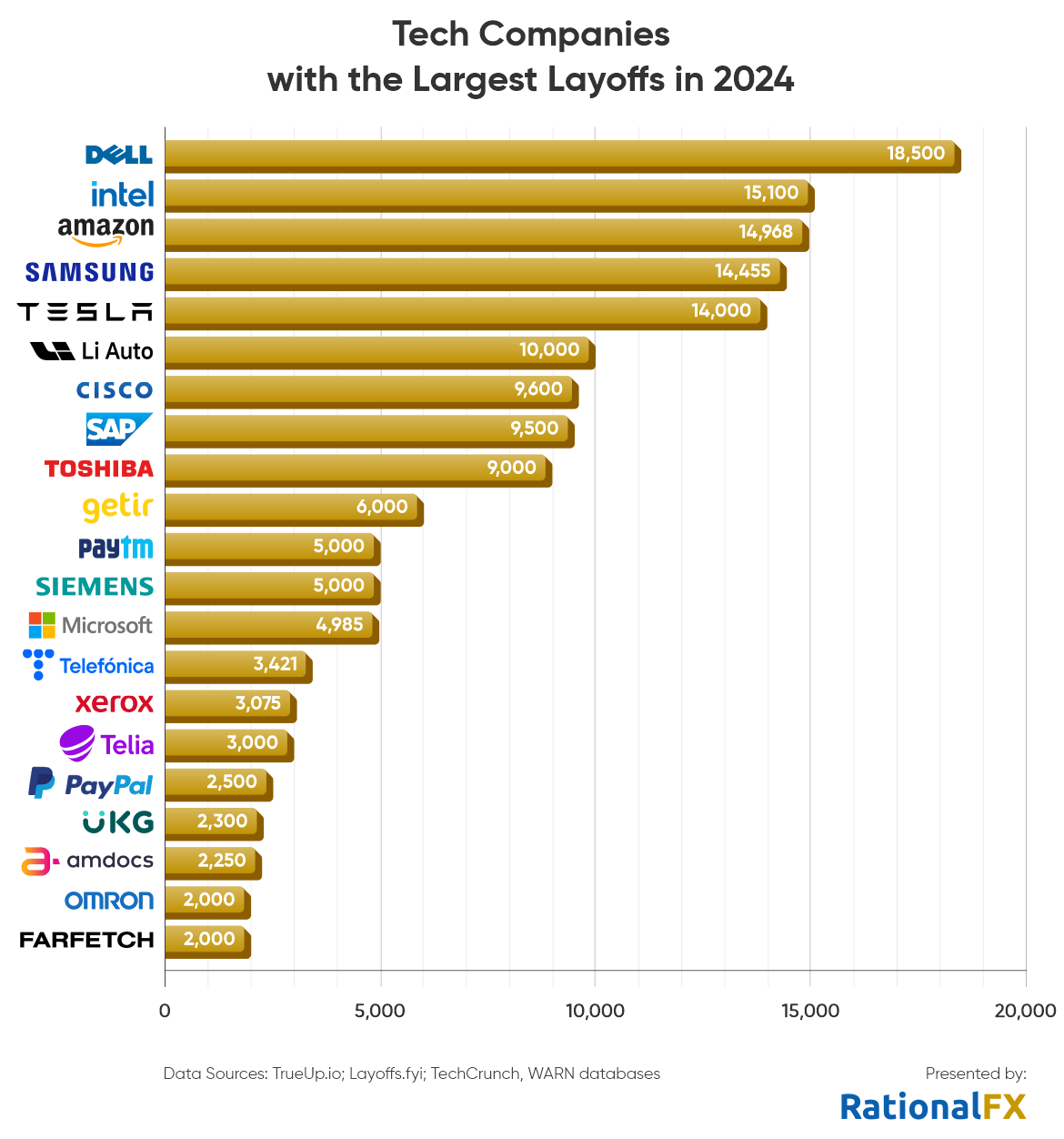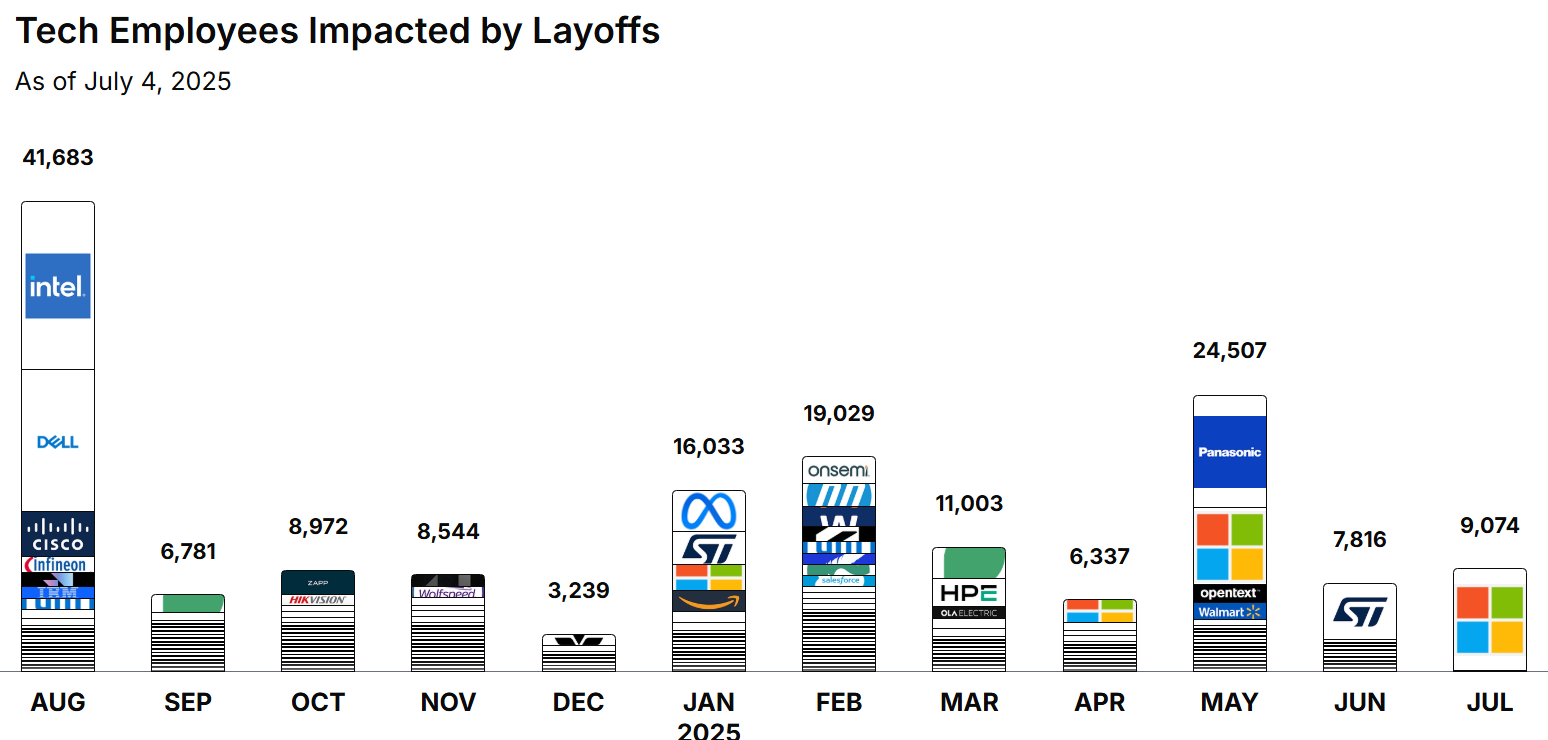Mass Firings in Silicon Valley: Are We Witnessing the End of Human-Centered Tech?
Are Silicon Valley’s 2025 layoffs the end of human-centered tech? From AI automation to investor-driven cuts, explore why thousands are out of work and what it means for the future of labor in a machine-first world.

SILICON VALLEY, July 2025
The Machine-First Mandate: A Structural Shift
As of mid-2025, over 100,000 tech jobs have been lost globally, with platforms like Layoffs.fyi tracking more than 150,000 cuts in 2024 across 549 companies. Even more striking, from January through May 2025, nearly 75,000 jobs were lost, representing a 35% increase compared to 2024.
Behind the numbers lies something deeper: a clear shift toward a machine-first mindset. CEOs and investors increasingly see employees not as long-term partners but as costs that can be replaced by AI. In April, TechSpot reported that more than half of the industry benefits had vanished. They were replaced by strict AI-monitoring systems and warnings about "AI threats." This isn’t just a market downturn; it’s a change in how we value human labor.
Unraveling the Illusion of a 'Safe' Tech Career
Tech careers, once promoted as the best choice for job security and high salaries, have become associated with uncertainty and rapid changes. The hiring surge after COVID-19 left a significant mark.
Between 2021 and 2023, Big Tech added nearly half a million positions, including roles in content, support, and development.
In early 2025, companies like Intel cut 15,000 jobs, and Microsoft eliminated 9,100 roles in just July. Amazon, Google, and Infosys also made substantial cuts.
These layoffs are not mere economic blips. They reflect strategic decisions based on AI-focused planning and investor expectations. This indicates a major departure from the human-centered narratives of tech’s earlier days.
“In my 15 years in support ops, I’ve never seen morale this low. People aren’t scared of AI — they’re scared of being irrelevant.”
— Former senior manager at Salesforce, laid off in May 2025
Overhiring, Declining Revenue, and AI Overconfidence
Three key factors contributing to the layoffs in 2025 need closer scrutiny:
Post-COVID Overhiring: Companies aggressively hired to match rising demand, believing it would lead to sustained growth, but faced harsh realities when consumer spending slowed and ad revenues dropped.
Declining Ad and Consumer Revenues: Economic uncertainty, higher interest rates, and budget cuts pushed CEOs to prioritize profit over growth.
AI Overconfidence: With heavy investments in generative AI, companies began to believe that instead of funding 100 support agents, two chatbots could do the job. According to Final Round AI, from January to June, around 78,000 tech jobs were lost due to AI replacement. This averages about 507 AI-driven job losses each day.
The promise of "efficiency" from AI quickly became a reason for reducing human jobs.

The Hidden Consequences of Productivity
AI improves productivity, but who really benefits? Employers enjoy cost savings. However, human workers are left facing a new reality:
- Entry-level white-collar jobs, like support, QA, and coding, are disappearing.
- Universities and employers are warning that young professionals struggle to gain essential experience since AI is taking internships and junior tasks.
- MIT economist David Autor warns this may create a “Mad Max-like” landscape with low-paying jobs and few opportunities for advancement.
- Surveys show that 53% of IT leaders expect AI to replace more jobs soon, even as some argue AI should support rather than replace human workers.
Unchecked optimism around AI may lead to increasing precariousness or even obsolescence for today’s workforce.
Market Forces, Investors, and the Profit Imperative
AI is celebrated as the future, but at what cost to people? CEOs are straightforward about it.
Ford’s Jim Farley has warned that AI could eliminate half of U.S. white-collar jobs.
Meta’s CFO reportedly told employees that “human capital is expendable if it threatens margins.”
Private equity and activist investors are pushing companies to cut costs and focus on AI before automation systems are even in place. The promise of streamlined AI teams often acts as an excuse for job cuts.
What's alarming isn’t just the layoffs; it's how profit-driven thinking uses AI hype to hide job losses.

AI’s Shadow Workforce: Quiet but Effective
While public layoffs attract attention, the true engine of job loss is hidden in AI systems that quietly take over roles:
- Content moderation, customer chat, QA, and frontend development tasks are now managed by AI models, sentiment analysis, and coding assistants.
- Artisan AI’s mission seems focused on stopping human hiring through these autonomous systems.
- At the management level, companies are laying off QA testers, junior developers, and support staff because AI can replicate their work more cheaply and efficiently.
This shift often goes unnoticed, but its impact is immediate—teams shrink, roles disappear, and layoffs become the new normal.
Global Shockwaves: Outsourcing Hubs Take the Hit
The fallout extends beyond Silicon Valley; it impacts global tech networks:
- India: With about 65% of global IT offshoring, an estimated 640,000 low-skilled jobs may be automated by 2030. Infosys and Wipro alone laid off thousands in 2025.
- Philippines: The BPO and voice-chat sectors saw a decline of approximately 15% in the second quarter.
- Eastern Europe and Africa: Tech and support roles in Nairobi and Lagos face steep declines as Western contracts vanish.
- Visa holders in the U.S. (H-1Bs) are losing jobs and facing deportation, adding to their struggles.
The global reduction in labor demand reflects a fundamental shift: labor is now seen as redundant rather than valuable.

Stories of Resilience: Pivoting Beyond the Pink Slip
Amid the chaos, human resilience stands out:
Retraining programs from Google’s AI Career Accelerator, MITx GenAI bootcamps, Coursera, and Khan Academy are opening new paths.
Some former tech workers are starting AI-ethics consultancies, climate tech companies like LeafAI, and other ventures using their specialized knowledge.
Online communities like r/cscareerquestions and Tech Layoffs Anonymous provide support and guidance.
These stories demonstrate that while AI takes away jobs, humans can still provide value through creativity, ethics, and expertise.
What the Data Tells Us
| Company | Month | Number Laid Off | Affected Roles |
|---|---|---|---|
| January | 12,000 | Engineers, UX, Content | |
| Meta | February | 10,500 | Marketing, Support, Metaverse Devs |
| Amazon | March | 9,800 | Warehouse IT, Alexa Devs |
| Microsoft | April | 8,200 | QA, Testing, Cloud Ops |
| Stripe | May | 4,000 | Backend Dev, Finance Ops |
| Salesforce | May | 6,000 | Support, Admin, Data Analysts |
Sector breakdown
Entry-level roles: hardest hit, with significant declines in internships and junior coder jobs.
Support & QA: often automated through chatbots or coding tools.
Global outsourcing: Latin America, South Asia, and Africa are hit hardest.

Unaccountable Automation: The Hidden Crisis
Executives blame economic slowdowns for the layoffs, but after years of profits, AI displacement is the true cause. And where's the accountability?
Most companies issue vague WARN or press releases blaming “economic headwinds” or overhiring.
Few disclose how many of the eliminated roles were due to AI.
Investors seem indifferent as they focus solely on profit margins.
Calls for transparency have emerged: Should companies disclose how many jobs were replaced by AI? Should there be independent audits? Progress depends on public demand for accountability.
Rehumanizing the Machine Era
We face a choice: AI can enhance human work or replace it. The direction we take will depend on our design, monitoring, and values. We can choose to create systems that:
- Enhance empathy and creativity, not just efficiency.
- Help reskill and redeploy laid-off workers.
- Value transparency, not just profits.
Without these efforts, the tech industry risks becoming a bleak landscape of displacement, efficient but devoid of human dignity.
Questions to Explore
What policies could require companies to disclose data about AI-related layoffs?
Should governments support roles that promote human-AI collaboration, such as prompt engineers, ethics specialists, or AI auditors?
How can academic institutions shift from rote learning to training in critical thinking and AI literacy?
Sources
- Content: The New York Times, Reuters, BBC, and The Wall Street Journal on recent tech layoffs and protests.
- Data visuals were adapted from Statista and Layoffs.fyi.
- Industry insights came from TechCrunch, GitHub, Salesforce, Meta Careers, and The Economic Times.
- Expert opinions and forecasts were drawn from Washington Post, Forbes, CIO.com, and The Guardian.
- Images are sourced from credible outlets, including TechCrunch, Observer, Reuters, Newsweek, Yahoo Finance, FinalRoundAI, Technext24, and The USA Leaders.




